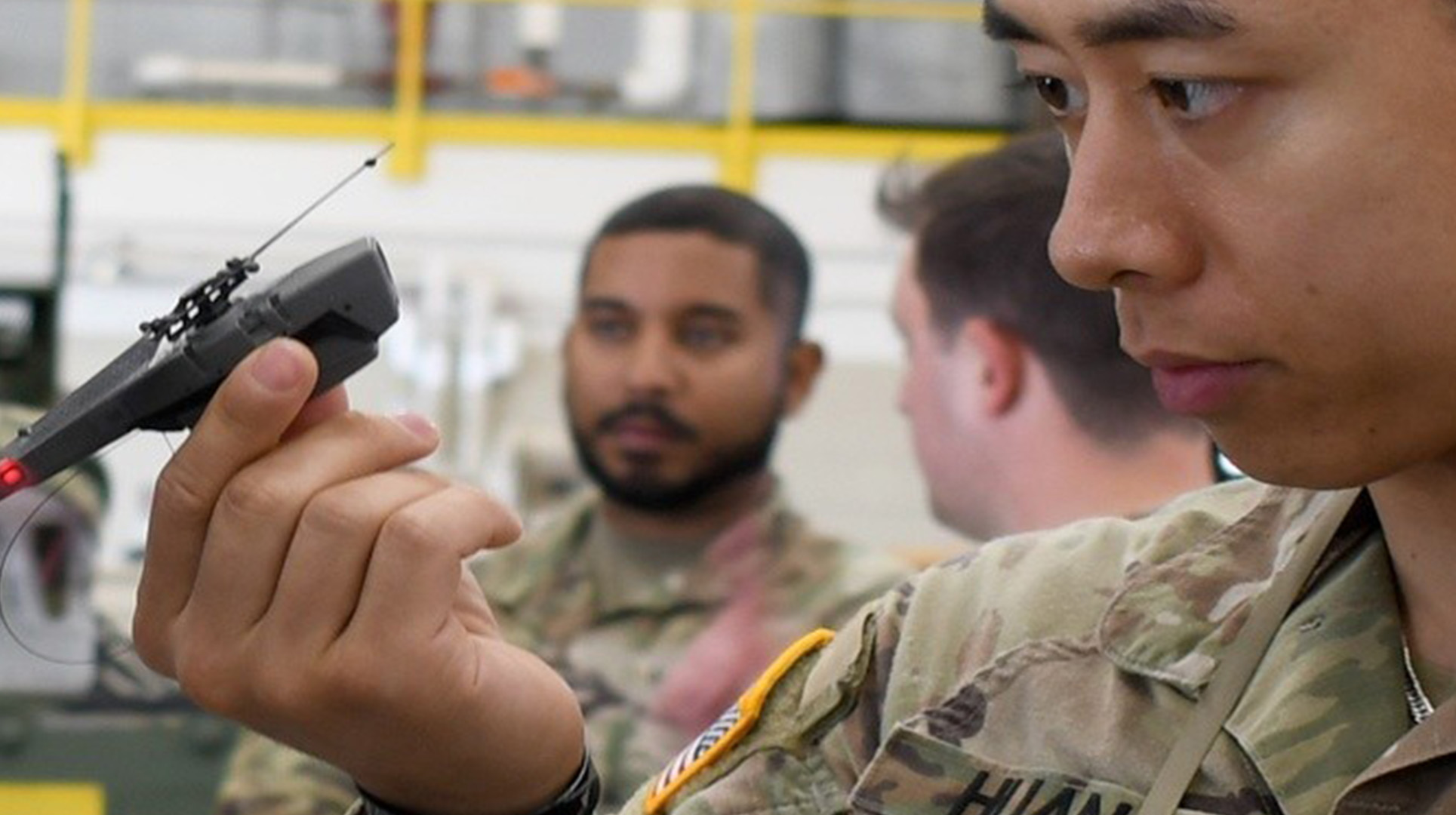

New York National Guard soldiers tested new “pocket-sized” drones that the Army hopes to one day field to every squad across the service. Similiar systems are already deployed with some active duty units including the 82nd Airborne, but the New York troops were the first Guard unit to train with the Black Hornet 3 drone, which can fly about 25 minutes and requires no equipment beyond what a soldier can carry on their combat gear. Soldiers of the 27th Infantry Brigade got a hands-on training with the drones at Fort Drum, NY.
Staff Sgt. Andy Huang said the drones were “small and lightweight, and with how high it can go, you can’t really hear it. So, you can recon a lot of stuff, and the bad guys can’t see it.”
The Army calls tiny drones like the Black Hornet 3 a Soldier-Borne Sensor, or SBS system, because a single soldier can carry every needed piece of the system — drone, controller, batteries, etc — as part of a standard combat load. The small drone transmits live video and HD still images, according to its manufacturer, FLIR Defense in Norway. Officials said the goal was to field one SBS to each of the Army’s 7,000 squads.
SBS drones have been with active duty units since 2019, and with Special Forces teams in Afghanistan before that, but last week’s event marked the beginning of National Guard units training with the mini drones.
Changing the role of Scouts
One career field where the arrival of drones will be widely felt is among cavalry scouts, the soldiers known for being the eyes and ears on the battlefield by gathering information on the enemy’s positions and activities.
In March, the Army put out a call to cavalry scouts, asking them to reclassify into other military occupational specialties because of force shortages in other areas.
“These MOSs aren’t going away. There’s just going to be less of them,” Sgt. Maj. Tobey Whitney, the Army’s senior career counselor told reporters in a briefing on the announcement.
Lt. Col. Gary Barney, commander of the 27th IBCT’s 2nd Squadron, 101st Cavalry Regiment said in a statement to Task & Purpose that the drones would help scout teams “make contact with the enemy with the smallest available force.”
“Instead of a team making direct visual contact, this system can help a team monitor a named area of interest or area that they would otherwise be unable to due to terrain, time, or enemy disposition. The drones will also limit the possibility of our personnel from being decisively engaged by the enemy by reducing the chance of direct or indirect fire contact,” Barney said.
Barney also said that the lightweight laser designator rangefinder system will improve cavalry scouts’ ability to send data faster to indirect fire systems like the organic 120mm mortar.
“A faster sensor-to-shooter connection will increase the lethality of our formation,” he said.
Subscribe to Task & Purpose today. Get the latest military news and culture in your inbox daily.
According to one of the units surveyed after training with the mini drone system, the use of cavalry scouts along with the drones improved reconnaissance.
“I would have my scouts out to call when vehicles were moving and could have a system employed at obstacles,” one soldier said. “From there I would use it to call for fire without having any soldiers present or in danger.”
Last week, soldiers also tested lightweight laser designator rangefinder systems which were fielded to various units across the brigade. The LLDR uses thermal imaging, cameras, laser designator spot imaging, digital magnetic compass, and GPS to give soldiers more accurate location information for targeting while the laser designator calls for fire “using precision, near-precision and area munitions.”
Spc. Jeffrey Anicet, a joint fire support specialist with 1st Battalion, 258th Field Artillery Regiment, and native of Middletown, New York told the Army in a release that the system gives soldiers more target visibility.
“For us, for the observers, it makes it easier for us to target rounds, especially with mortars,” Anicet said. “When working with aircraft on guided ordnance, we’re able to precision drop along those coordinates exactly where we want them to the tenth of a meter.”
Drones down to the ‘lowest Joe’
Officials said that soldiers use the drones have found the systems useful for clearing danger areas or blind spots, providing targeting location for gunners, collecting images for intelligence, route clearing and investigating explosive devices.
Downsides, they say, are short battery life and limited use in windy conditions or low-light.
Soldiers also said the SBS made base defense and security easier compared to larger loitering drones like the RQ-11B Raven “that’s continuously moving versus one that you can stop and hover and look at it.”
While only a handful of 27th IBCT soldiers received the drone training last week, the plan is for those soldiers to bring expertise back to their National Guard units. The Army wants to train soldiers to use the mini drones at all levels, including the “‘lowest ‘Joes’,” Huang said.
The latest on Task & Purpose
- Marines revive historic ‘Sledge’ airfield on Peleliu in Pacific pivot
- Carrier USS Nimitz back at sea following months of maintenance
- Air Force special operations squadron commander fired after arrest
- Naval and Air Force Academies welcome class of 2028 with ‘I-Day,’ plenty of yelling
- Top general in ISIS fight’s advice to junior officers: Be ‘humble enough to listen’
